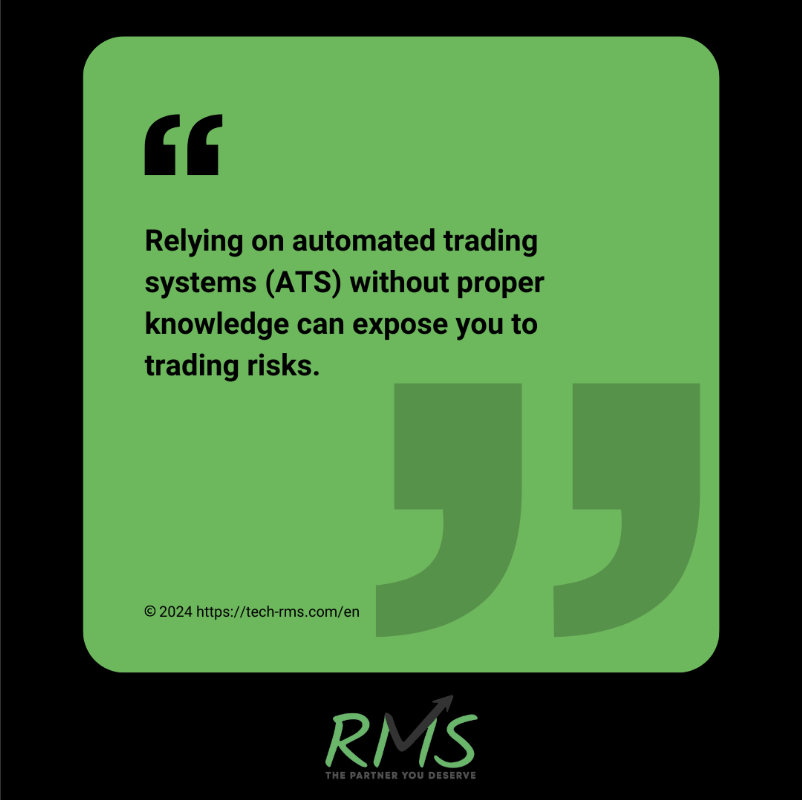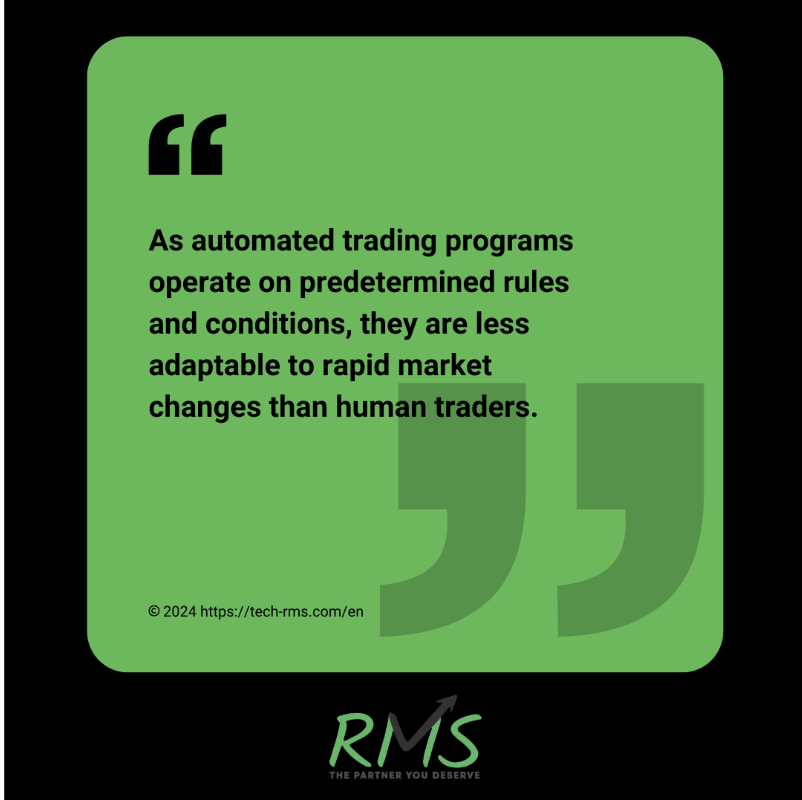
Automated trading can be a great tool and strategy for making larger trade profits. However, relying on automated trading systems (ATS) without proper knowledge can expose you to trading risks.
In this article, you’ll know about some of the trading risks commonly associated with automated trading. More importantly, you’ll learn how to protect yourself and reduce your exposure to trading risks when using an automated trading program.
What Is Automated Trading?
Automated trading refers to the practice of using an ATS, or an automated trading program, to execute your trades. These programs employ a combination of mathematical formulas, complex algorithms, and technical indicators to “make” trading decisions.
You may also know these computerized trading programs by their more common name, trading robots.

An ATS carries out your trades according to predetermined rules or criteria. You define and set these criteria when programming or writing the code that tells a trading robot what to do and when to do it.
For instance, let’s say you want an automated trading program that helps you instantly close positions after making a specific number of profits.
In this case, you can write a code that programs your ATS to constantly check each of your positions’ profits against your specific target profit. This can involve inserting a conditional statement (e.g., if-then-else) that instructs the ATS to close positions with profits equal to or greater than your target.
The above example is just a simplified account of what automated trading can potentially let you do. More experienced and programming-savvy traders can create automated trading programs that can even automate complex trading strategies.
What Are the Risks Associated With Automated Trading?
Risks are part and parcel of trading in financial markets. The same applies to using automated trading programs.
Below are some of the most common trading risks you can encounter when using an automated trading system.
1. Technical Risks
Automated trading is heavily reliant on technology. This makes it vulnerable to mechanical failures like internet connectivity issues, software bugs, and glitches.
These technical issues can result in unwanted results (e.g., order execution delays, slippage, incompatibility with platforms) that negatively affect your trades and profits.
2. Market Risks
Financial markets are inherently dynamic and volatile. You can never be prepared (and generally not advised to) for all contingencies.
As automated trading programs operate on predetermined rules and conditions, they are less adaptable to rapid market changes than human traders.
3. Data Integrity
Programming an automated trading system requires feeding it historical market data. Using reliable and accurate data is paramount in this process.
Feeding an ATS with outdated or unreliable market data can compromise the accuracy of its strategies and lead to unintended losses.
How Can You Reduce the Risks Associated with Automated Trading?
Incorporating risk mitigation measures in your automated trading programs can help reduce your trading risk exposure.

Risk reduction measures are many and varied. Each addresses a specific trading risk associated with using trading robots.
You can read some of these risk-reduction measures below.
1. Use a Reliable Automated Trading System
The market is rife with many automated trading programs, each boasting of being able to net you large gains.
Doing proper research before selecting which ATS you’ll use for your trades is crucial. Check review sites and ask a trading robot’s previous and present users about their experience with the product.
With due diligence, you can filter out automated trading programs that are likely ineffective or falsely advertised. This will help you narrow down the best possible choices.
2. Always Do Backtesting
Backtesting refers to testing trading robots using historical data. This will let you gauge how an ATS will perform in live markets with similar conditions. It helps pinpoint areas where the automated trading program needs more development and fine-tuning.
3. Don’t Forget to Setup Stop-Loss Orders
Stop-loss orders are commands you input into your broker’s trading platform. These orders automatically execute when an asset’s price hits predetermined levels, helping you avoid incurring further losses.
Regardless of your trading strategies, stop-loss orders are a must if you don’t want to end up taking unexpected losses.
4. Use Position Sizing
Position sizing pertains to how much capital you allocate to each trade. Using position sizing tactics, you can effectively control how much risk you expose yourself to with every trade.
When writing the code for your automated trading system, you can incorporate specific commands to let your ATS dynamically adjust your position sizes depending on market conditions.
5. Constantly Monitor Your Automated Trading System
Keeping an eye on your ATS is a proactive risk-management measure. It lets you make dynamic adjustments and adapt better to market changes.
Perhaps even more importantly, actively monitoring your automated trading program lets you stay atop its performance and be ready to take over in case of technical disruptions.
